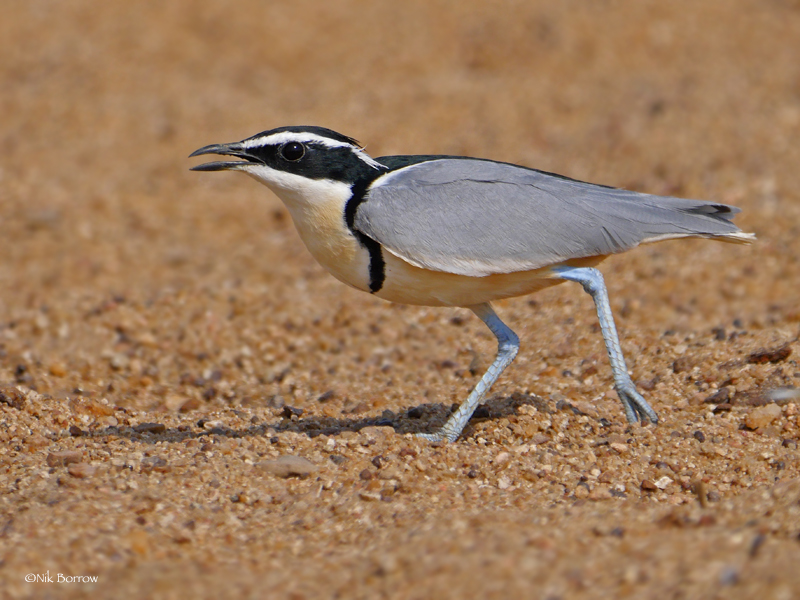Since 2019, Guinée Ecologie (BirdLife Partner in Guinea) has been involved in the restoration of mangroves in the country. From 2019 to 2022, more than 1,400 hectares of mangroves were restored in the Tristao Islands. Yamoussa Cissé, grew up in...
Since 2019, Guinée Ecologie (BirdLife Partner in Guinea) has been involved in the restoration of mangroves in the country. From 2019 to 2022, more than 1,400 hectares of mangroves were restored in the Tristao Islands.
Yamoussa Cissé, grew up in Kogon Village, Yattiya sector, located in Tristao Islands, Northern Guinea – one of the islands which form the border of Guinea Republic and Guinea Bissau. The islands are characterized by expansive sandbanks, estuaries, mud, and mangrove forests which host numerous species including sea turtles and crocodiles. Guinea’s coastal area extend 320 km2 dotted by inlets, estuaries, and numerous offshore islands. The country’s mangrove area extends up to 40km inland.
Mangroves play a vital role in coastal ecology, securing and sustaining coastal communities. They protect coastlines from extreme storms, erosion, and wave action. They also act as carbon sink sequestering 3-5% more carbon unit per area – more than any other forest system. In addition, mangroves help local communities to have an abundance of fish resources, through facilitating fish reproduction throughout the coastline particularly shrimps and oysters. Despite this importance, mangroves ecosystem in the country is now under threat.

Egyptian Plover, copyright Nik Borrow, from the surfbirds galleries
The population of Tristao Islands fluctuates between 15,000 and 20,000, depending on the number of fishing camps set up, is sustained by exploitation of natural resources and mangroves.
From 2010 to 2015, we have seen the mangrove area reduce drastically by 7000 hectares notes Aboubacar Soumah, Guinée Ecologie’s mangrove restoration Project Coordinator in Tristao and Kapathez areas.
Since 2019, Guinée Ecologie (BirdLife Partner in Guinea) has been involved in the restoration of mangroves in the country. Between 2019 and 2022, Guinee Ecologie carried out a restoration project in the Tristao Islands. The project supported by the Foundation Audemar Watkins, led to the restoration of over 1,400 hectares of mangroves in the Tristao Islands.
“The Tristao islands are essential habitats for wildlife and fishery resources. Tristao has been a Ramsar site since 1992 and has had marine protected area (MPA) status since 2013, with the aim of ensuring the protection and participatory conservation of biodiversity and socio-cultural heritage to improve the living conditions of communities. It is a breeding ground for several species of fish and marine turtles, and over 200 species of birds have been identified, hence the need to restore this critical ecosystem, argues Mamadou Diawara, Guinée Ecologie Executive Director.
Building on the success of the PAPBIO project launched a second mangrove restoration project in the Konkouré delta in the Dubréka prefecture in January 2023. Funded by the same donor, Audemars Watkins Foundation, this 3-year project is being implemented in collaboration with the Ministry of the Environment and Sustainable Development, through the Guinean Office of National Parks and Wildlife Reserves (OGPNRF), and local communities in the project area.
The aim is to increase the mangrove area to 500 ha, including 100 ha of mangrove to be reforested, 100 ha through Assisted Natural Regeneration (ANR), 50 ha through the restoration of rice paddies and 250 ha through activities aimed at reducing pressure on mangrove wood, notably the promotion of solar salt production, the construction of ovens and improved stoves, and fencing through surveillance. But also promoting good sustainable production practices.
Before starting on the project, Guinée Ecologie conducted awareness raising exercises in the local communities, which Cisse took part in.
“We’re happy that this project is in place, and I’ll be there with all my heart to support the project so that we can achieve our objectives. As soon as reforestation activities are launched, we’re going to deploy ourselves to reforest as many hectares of mangrove as possible. In any case we are happy that Guinée Ecologie engaged us in this project. We’re looking forward to the reforestation activities so that we can make our contribution”, said Cissé.
Early Gains
To this end, information and site identification activities for reforestation, ANR, and the restoration of abandoned rice fields in the Konkouré delta prefecture were carried out with local communities. Further, a socio-economic survey of the pilot sites for the Konkouré delta restoration project was carried out by the Regional Partnership for Coastal and Marine Conservation (PRCM), a working group set up and local agreements signed.
For Ousmane Bangoura, head of the Dofili/Kopèrin Sector on the mainland side, is doing a remarkable job in the Konkouré Delta. “We see this restoration project as a major step forward in protecting the environment in general, and our mangrove ecosystem. For this reason, we can only appreciate this initiative. We’re going to support all the players involved in this project,” he enthuses.
As part of project implementation activities, Guinee Ecologie began restoration campaigns in August 2023. In the same vein, the project will support communities in market garden production, oyster farming, solar salt production, the distribution of 50 chorkor ovens for fish smokers, and 100 improved fireplaces to be made and distributed to households. Awareness-raising, information and communication activities will be carried out in favor of mangrove conservation.
“Our long-term commitment remains the sustainable conservation of mangrove ecosystems in the Tristao Islands of Guinea. And to achieve this, we strive to ensure the implementation of concrete measures for the sustainable management of mangroves and the reduction of anthropic pressure by promoting alternative techniques, supporting income-generating activities and natural resource management” concludes Diawara.
“We see this restoration project as a major step forward in protecting the environment in general, and our mangrove ecosystem. For this reason, we can only appreciate this initiative. We’re going to support all the players involved in this project.” Ousmane Bangoura, Head of the Dofili/Kopèrin Sector in the Tristao Islands











